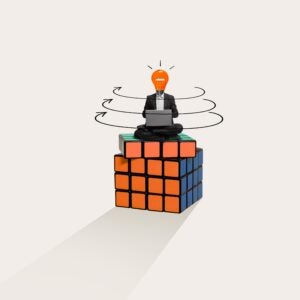 Adobe’s $540 million acquisition of TubeMogul this week was a bet on more automation and addressability in TV.
Adobe’s $540 million acquisition of TubeMogul this week was a bet on more automation and addressability in TV.
In addition, the deal gives Adobe Marketing Cloud – which is known for its strength in site analytics and creative – the ability to do more cross-screen media execution.
TubeMogul has shown consistent growth quarter after quarter, following a rocky start to its stock price after its July 2014 IPO. The transaction virtually doubled the value of TubeMogul’s market cap overnight.
AdExchanger spoke with TubeMogul CEO Brett Wilson and Adobe VP of ad solutions Justin Merickel about the motives and implications of the deal.
AdExchanger: Why did Adobe buy TubeMogul?
JUSTIN MERICKEL: We love the management team and the product. Strategically, we saw more video fragmentation and the trend toward more addressability through programmatic television. Video is critical for us. This gives us a direct play in video advertising that helps us address emerging consumption [patterns with] customers.
Will TubeMogul make [Adobe’s search and display DSP] Media Optimizer more robust?
MERICKEL: Absolutely. We have been investing historically in search, social and developing display. Although we are very happy with our growth in display, TubeMogul fulfills a big ask in the market around video and programmatic television.
We’re happy about where this will take us strategically, and it is a complementary asset. Brett’s been really focused with the company on brand and the engagement that video and television advertising produces. This is an acceleration play for us and adds new capabilities to the marketing cloud.
Brett, was this deal opportunistic for you or were you ready to sell for awhile?
BRETT WILSON: It was a combination. It’s a really good outcome for our shareholders, employees and clients. For our team, we’ve really focused on people and culture and Adobe focuses on the same things.
For our clients, the story is really exciting. When you think about how fragmented and complex advertising has become and you combine the pieces of the Adobe Marketing Cloud with the assets of TubeMogul in video, all of a sudden you have a single set of integrated software products. It solves the CMO’s biggest challenges and helps them leverage their data and get their content and ads in front of consumers wherever they are.
What made Adobe a strategic fit for you?
WILSON: TubeMogul doesn’t have a DMP or any proprietary data, so we’re excited about how complementary this is for us.
Will the fact that Adobe owns a DMP change anything given TubeMogul’s numerous DMP partnerships?
WILSON: One of the principles of the [deal with] Adobe is to make sure a lot of these pieces are interoperable. If a client wants to use the Adobe DMP but not the DSP, that’s perfectly fine. There would be a set of advantages such as a really seamless integration for clients who use the whole stack. You’ve heard us talk about independence and alignment with advertisers for a long time. Adobe looks at the world exactly the same way.
Where does TubeMogul fit into the Adobe Marketing Cloud product stack and will you retain the branding?
MERICKEL: It’s too early for us to comment, but clearly we want to push the breadth of the stack, the value of the connection between first-party data and analytics, how that gets translated into the right segmentation strategy in our data management platform Audience Manager. Then, how we’re uniquely activating that audience out through [arguably] the most important media channel: video and television.
WILSON: We’re proud of a lot of things, but the name is not one of them. Maybe this will finally be our chance to shed the name. (laughs) The initial focus is on product integration.
Where will there be client overlap?
WILSON: There’s definitely a set of overlapping clients. But Adobe has a far larger footprint than TubeMogul that will accelerate what we’re doing with brands. There are areas we have a lot of strength in – like agencies.
What is Adobe Marketing Cloud’s differentiator now from the other marketing clouds? Is it media activation/applications rather than data or CRM like your competitors?
MERICKEL: I think data is still at the core of Adobe when you look at our investments around machine learning [and] our footprint in analytics or our data management platform. So while data is still at the core, we’re addressing that through activation in important channels like video, programmatic television, search, social [or] email.
How does TubeMogul tie in to Adobe’s broadcast TV tool, Primetime?
MERICKEL: Primetime drives content for folks like MLB and other big broadcasters. What this potentially brings is unique connections to inventory, through TubeMogul’s On Demand marketplace. So we think there’s ways to bring premium monetization to bear through TubeMogul. I don’t think we have a strict definition of what that will look like yet.
Can you give more color on what Tube’s marketplace, On Demand, is?
WILSON: We built out this set of pre-integrated publishers through a header bidding tag, which to the extent that more premium publishers embrace header bidding, it means that there’s more premium inventory available to programmatic buyers.
Brett, how do you feel about the ad tech market from the time you went public until now?
WILSON: We saw an industry with a lot of companies narrow down to fewer companies in the consideration set. It’s becoming more obvious who the winners will be, and we think companies like Adobe that can offer a brand a single console to automate all of the workflows they’ve had, are [among them]. This is about software automating a massive industry. I think it’s an important industry.
Interview condensed and edited.













